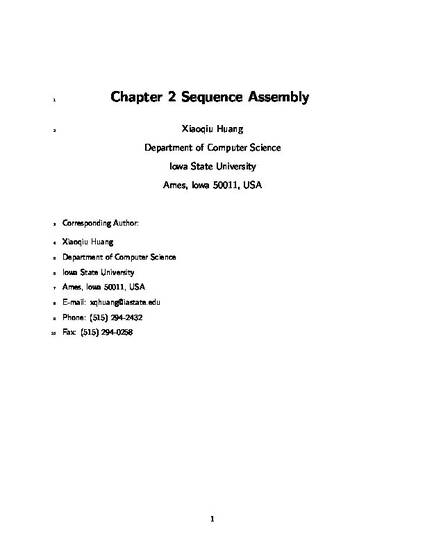
Contribution to Book
Sequence Assembly
Bioinformatics: Volume I: Data, Sequence Analysis, and Evolution
Document Type
Book Chapter
Disciplines
Publication Version
Accepted Manuscript
Publication Date
1-1-2017
DOI
10.1007/978-1-4939-6622-6_2
Abstract
We describe an efficient method for assembling short reads into long sequences. In this method, a hashing technique is used to compute overlaps between short reads, allowing base mismatches in the overlaps. Then an overlap graph is constructed, with each vertex representing a read and each edge representing an overlap. The overlap graph is explored by graph algorithms to find unique paths of reads representing contigs. The consensus sequence of each contig is constructed by computing alignments of multiple reads without gaps. This strategy has been implemented as a short read assembly program called PCAP.Solexa. We also describe how to use PCAP. Solexa in assembly of short reads.
Copyright Owner
Springer Science+Business Media New York
Copyright Date
2017
Language
en
File Format
application/pdf
Citation Information
Xiaoqiu Huang. "Sequence Assembly" Bioinformatics: Volume I: Data, Sequence Analysis, and Evolution (2017) p. 35 - 45 Available at: http://works.bepress.com/xiaoqiu-huang/26/

This is a manuscript of a chapter published as Huang X. (2017) Sequence Assembly. In: Keith J. (eds) Bioinformatics: Volume 1: Data, Sequence Analysis, and Evolution. Humana Press, New York, NY. doi: 10.1007/978-1-4939-6622-6_2. Posted with permission.